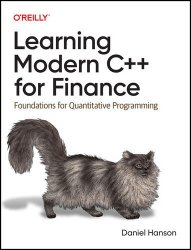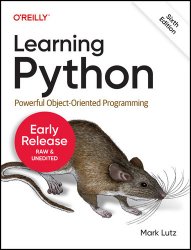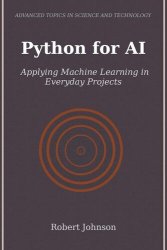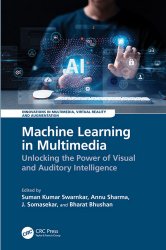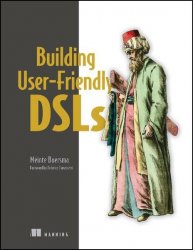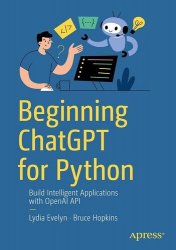 Название: AI in Clinical Medicine: A Practical Guide for Healthcare Professionals
Название: AI in Clinical Medicine: A Practical Guide for Healthcare ProfessionalsАвтор: Michael F. Byrne, Nasim Parsa, Alexandra T. Greenhill
Издательство: Wiley-Blackwell
Год: 2023
Страниц: 592
Язык: английский
Формат: pdf (true)
Размер: 82.1 MB
AI in clinical medicine.
An essential overview of the application of Artificial Intelligence in clinical medicine.
AI in Clinical Medicine: A Practical Guide for Healthcare Professionalsis the definitive reference book for the emerging and exciting use of Artificial Intelligence (AI) throughout clinical medicine. AI in Clinical Medicine: A Practical Guide for Healthcare Professionals is divided into four sections. Section 1 provides readers with the basic vocabulary that they require, a framework for AI, and highlights the importance of robust AI training for physicians. Section 2 reviews foundational ideas and concepts, including the history of AI. Section 3 explores how AI is applied to specific disciplines. Section 4 describes emerging trends, and applications of AI in medicine in the future.
Artificial Intelligence is an overarching term used to describe the use of Machine Learning algorithms and software. In healthcare applications, AI mimics human cognition in the analysis, presentation, and comprehension of complex data, such as in medical imaging.
AI is a rapidly growing technology, involving much of what we do day to day, from the smart devices on our wrists to the virtual library we access online. We are, rightly, seeing AI applications and advancement in clinical medicine. In the last few years, deep learning techniques and data availability have resulted in an explosion of applications/potential applications of AI to the whole of clinical medicine. We are moving ahead in our applications for radiology, pathology, dermatology, endoscopy, surgery, robotics, drug discovery, and more. It’s not a matter of when anymore: we are already living in the AI age, and we can expect and celebrate that AI is increasingly being applied for medical purposes to address some of our biggest clinical challenges.
For this reason, physicians across the entire healthcare spectrum and at all stages of their careers need to have at least a basic appreciation of the AI tools that are already in use in clinical medicine, and a knowledge base to grasp those that come down the pike. We wrote this book for inquisitive pre‐med or medical students, graduate‐level students, practising physicians, academics, and nursing and allied health professionals – basically, everyone involved in healthcare. The content includes information that is understandable for the clinician who wants to integrate and apply this knowledge to improve patient care. This book is also valuable for those already in the medical AI space, including entrepreneurs and those who are developing clinical tools, as well as regulatory/policy/political personnel involved in digital health.
Our goal was that AI in Clinical Medicine: A Practical Guide for Healthcare Professionals would become the definitive reference book for the emerging and exciting use of AI throughout clinical medicine. This book:
• Describes where AI is currently being used to change practice in specific medical domains.
• Discusses the applicability of AI, and provides successful cases of AI approaches in the setting of specific specialties.
• Addresses some of the unique challenges associated with AI in clinical medicine.
• Includes bulleted lists of
• Learning objectives.
• Key insights.
• Clinical vignettes (where appropriate).
• Brief examples of where AI is successfully deployed.
• Brief examples of potential problematic uses of AI, and possible risks or issues.
Machine Learning (ML) uses algorithms to analyse and interpret data, and to make intelligent decisions based on the learnt understanding of the features present in provided data. While traditional machine learning requires pre‐defined features of interest (for example, shape of tumour, size of tumour, heterogeneity etc., derived by some mathematical or statistical function) to understand the data and infer a decision, modern machine learning techniques, also known as neural networks (NN), can automatically determine which features are important. Multiple decision nodes, commonly referred to as neurons, can be stacked in the same mathematical layer or in multiple layers, with each neuron having some non‐linear activation functions (simple maths functions that can switch a neuron ‘on’ or ‘off’) that help it learn complex features representative of the provided data samples (for example, patterns in data samples that mathematical models cannot define. Traditional Machine Learning algorithms can be trained using fewer data samples, as compared to NNs that require large data samples for training. Machine Learning algorithms are first developed using a ‘training’ dataset, and their validity is then usually confirmed by evaluating the algorithms using a separate dataset, also known as the ‘testing’ dataset. The goal is to ensure that the algorithm is generalizable and applicable to various data.
From radiology, to pathology, dermatology, endoscopy, robotics, virtual reality, and more, AI in Clinical Medicine: A Practical Guide for Healthcare Professionals explores all recent state-of-the-art developments in the field. It is an essential resource for a general medical audience across all disciplines, from students to clinicians, academics to policy makers.
Скачать AI in Clinical Medicine: A Practical Guide for Healthcare Professionals
[related-news] [/related-news]
Комментарии 0
Комментариев пока нет. Стань первым!
